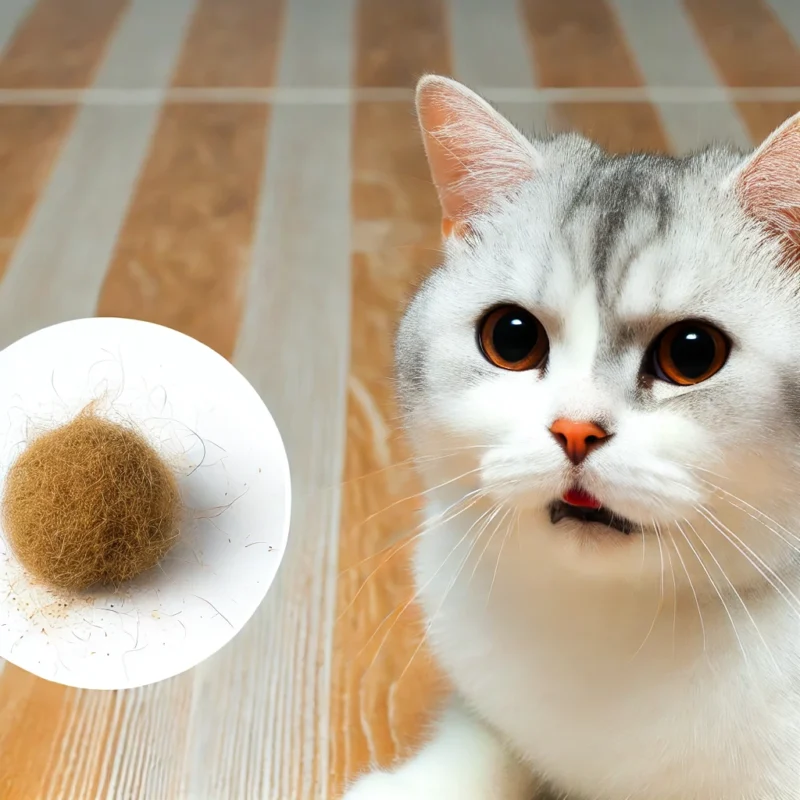Uncategorized
Cat Hairball Vomit: Causes, Prevention, and Solutions
Cat hairball vomit is a common issue many cat owners face. Cats often groom themselves, and in the process, they ingest loose fur, leading to hairballs. While hairballs are a natural byproduct of grooming, excessive vomiting can be concerning. This article delves into the causes, prevention methods, and solutions for cat hairball vomit.
Causes of Cat Hairball Vomit
Understanding the underlying causes of cat hairball vomit can help in managing this issue effectively.
- Grooming Habits: Cats are meticulous groomers, and their rough tongues collect loose fur, which they swallow. This fur accumulates in their stomachs, forming hairballs.
- Shedding: Increased shedding, especially during seasonal changes, contributes to more hair ingestion.
- Diet: A diet lacking in fiber can lead to insufficient digestive movement, making it harder for hairballs to pass through the digestive tract.
Prevention of Cat Hairball Vomit
Preventing cat hairball vomit involves a combination of grooming, dietary adjustments, and using specialized products.
- Regular Brushing: Regularly brushing your cat helps remove loose fur before it can be ingested. Consider using the Pumpkin Pet Hair Brush for effective grooming.
- High-Fiber Diet: A diet rich in fiber aids in the smooth passage of hair through the digestive system. Consult with your veterinarian about the best high-fiber foods for your cat.
- Hairball Remedies: Over-the-counter hairball remedies can lubricate your cat’s digestive tract, making it easier for hair to pass.
Solutions for Cat Hairball Vomit
If your cat frequently vomits hairballs, consider these solutions to alleviate the problem.
- Specialized Cat Food: Some cat foods are formulated specifically to prevent hairballs. These foods typically contain higher fiber content and specific nutrients to support digestion.
- Interactive Toys: Keeping your cat active and engaged can reduce excessive grooming caused by boredom. The Cat USB Charger Toy Fish is an excellent option to keep your cat entertained.
- Hydration: Ensure your cat stays hydrated. Proper hydration helps maintain a healthy digestive system, aiding in the movement of hairballs through the gut.
When to See a Veterinarian
While occasional hairball vomiting is normal, frequent vomiting can indicate underlying health issues. Consult your veterinarian if you notice any of the following:
- Persistent Vomiting: If your cat vomits more than once or twice a week, it could be a sign of a serious problem.
- Lethargy: A sudden decrease in energy levels might indicate a health issue.
- Loss of Appetite: If your cat stops eating or shows a reduced appetite, seek veterinary advice.
Natural Remedies for Cat Hairball Vomit
There are several natural remedies that can help manage hairball issues in cats.
- Olive Oil: Adding a small amount of olive oil to your cat’s food can help lubricate the digestive tract.
- Pumpkin: Canned pumpkin is high in fiber and can aid in digestion, helping to prevent hairballs. Introduce it gradually into your cat’s diet.
- Cat Grass: Growing cat grass at home provides a natural source of fiber and can help in reducing hairball formation.
Grooming Tools for Reducing Hairball Vomit
Using the right grooming tools can significantly reduce the amount of loose fur ingested by your cat.
- Hair Remover Glove: The Hair Removing Glove for Dogs and Cats makes grooming a bonding experience while effectively removing loose fur.
- Self-Grooming Corner Brush: A self-grooming brush allows cats to groom themselves while reducing loose fur around the house.
Conclusion
Managing cat hairball vomit requires a multifaceted approach. Regular grooming, a high-fiber diet, and the use of hairball remedies can significantly reduce hairball formation and vomiting. ChimpyTrendy offers a variety of products to help manage and prevent hairballs, ensuring your cat remains healthy and comfortable.


